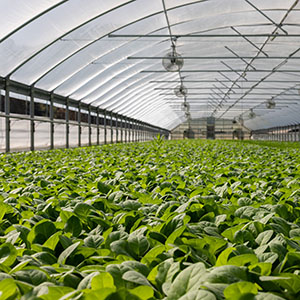Comparative study of coating agents for prevention of fine-dust-induced light transmittance reduction in greenhouse covering materials

All claims expressed in this article are solely those of the authors and do not necessarily represent those of their affiliated organizations, or those of the publisher, the editors and the reviewers. Any product that may be evaluated in this article or claim that may be made by its manufacturer is not guaranteed or endorsed by the publisher.
Authors
Recently, rapidly growing industry and abnormal climate change have generated high concentrations of fine dust. This fine dust settles on greenhouses and hinders photosynthesis of the plants within. In this study, the greenhouse environment was reproduced using fine dust devices, and the fine dust adhesion and washing efficiency were compared. The optimal coating agent was selected by performing a coating experiment to assess the changes in the light transmittance and contact angles of eight greenhouse coatings incorporating different coating agents. The most pronounced adhesion rate was observed in an ion humidification test for (NH4)2SO4. The coating agent with Teflon, which exhibited the largest contact angle in this study, had the highest washing efficiency, followed by the coating agent with the highest polydimethylsiloxane ratio using isopropyl alcohol (IPA) as a solvent, and the coating agent with the highest polydimethylsiloxane using water as a solvent. However, the ingredients added to the agents with Teflon or IPA were judged inappropriate for greenhouse use due to environmental reasons. Therefore, the coating agent with the highest polydimethylsiloxane using water as a solvent, which is the most suitable coating agent and satisfies both the washing efficiency and contact angle requirements, is expected to be used as a greenhouse coating agent to prevent light transmittance reduction in greenhouses due to fine dust accumulation.
How to Cite

This work is licensed under a Creative Commons Attribution-NonCommercial 4.0 International License.














